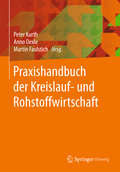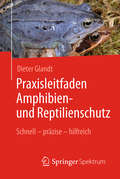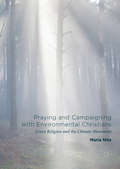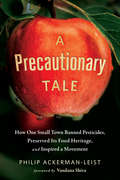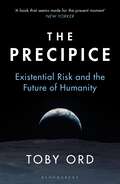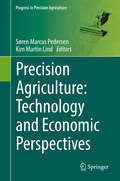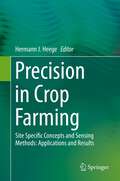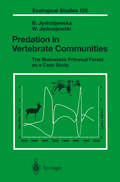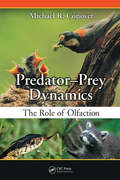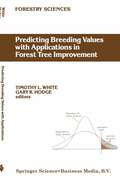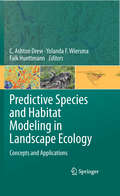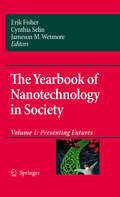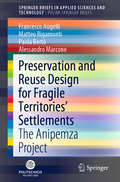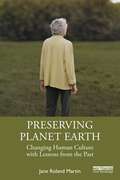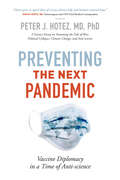- Table View
- List View
Praxishandbuch der Kreislauf- und Rohstoffwirtschaft
by Peter Kurth Anno Oexle Martin Faulstich Armin Rockholz Johannes Kirchhoff Markus Gleis Peter Quicker Christian Kabbe Gerhard Rettenberger Holger Alwast Michael Krüger Torsten Wenk Alexander De Diego Rainer Geesmann Dominik Lück Christine Radeloff Lammers Thomas Joachim Wuttke Sandra Giern Maren Heidmann Andreas Zühlsdorff Markus Figgen Rebecca Schäffer Joachim Hagmann Antje Wittmann Jens Gruber Jörg Karenfort Hendrik Reffken Lepper Christoph Hendrik Kempkes Andreas Bruckschen Dirk Mellen Tobias Becker Simon Obert Ochs Annette Aloys Oechtering Matthias Heinen Hans-Bernhard Rhein Laurent Hequet Matthias Staub Anne Nikodem Ralf Schmitz Thorsten Feldt Sabine Tirrel Ralf Reuter Isabelle Yoon Jens Loschwitz Jasmin Klöckner Berthold Heuser Klaus-Axel Riemann Ralf Gruner Klaus Fricke Sigrid Hams Sabine Flamme Christoph Bildstein Fabian Kraus Hans-Dieter Huber Ewa Harlacz Jan Seelig Kai Münnich Sebastian WankaDie traditionell vielschichtige Abfallwirtschaft entwickelt sich mit der ihr eigenen Dynamik zur Kreislauf- und Rohstoffwirtschaft. Im vorliegenden Handbuch werden erstmalig alle wesentlichen Aspekte dieses Wirtschaftssektors – fachübergreifend und interdisziplinär – behandelt. Neben den in der Ressourcenwirtschaft relevanten rechtlichen Fragestellungen (u. a. Stoffrecht, Verwaltungsrecht, Haftung und Transport) sind die unterschiedlichen Stoffströme dargestellt (z. B. Glas, Papier, Verpackung, Metalle und Elektronik-Altgeräte, Bioabfälle) sowie Anlagentechnik und Logistik beschrieben (Abfallwirtschaftssysteme, Abfallbehandlung, Deponierung). Bei der Auswahl der Themen und Autoren lag der Schwerpunkt auf Praxisrelevanz und Praxisbezug.Der Inhalt• Rechtlicher Rahmen: Beginn und Ende der Abfalleigenschaft, Stoffrecht, Einstufung von Abfällen, Nachweis- und Registerführung, Reichweite und Grenzen des staatlichen Entsorgungsmonopols, Handeln und Makeln, Exportrecht, Anlagenzulassungsrecht, Entsorgungsvertragsrecht, Vergaberecht, Kartellrecht, Straf- und Bußgeldrecht, Umweltmanagementsysteme• Stoffströme und Ressourcenwirtschaft: Glasrecycling, Altpapier, Kunststoffe, Verpackungsabfälle, Bioabfälle, Klärschlamm, Altholz, Elektroaltgeräte, Lithiumbatterien, NE-Metalle, Gewerbeabfall, mineralische Bauabfälle, steuerliche Konsequenzen der Energieströme• Technik, Logistik, Anlagen: Abfallwirtschaftskonzepte, Recyclingbörsen, IT in der Abfallwirtschaft, Anlagenplanung, Sammelfahrzeuge, Demontage, Verbrennung, Verbrennungsrückstände, Phosphorrecycling, Deponierung, DeponierückbauDie Zielgruppe• Verantwortliche in Unternehmen der Kreislauf- und Rohstoffwirtschaft, Anbieter umwelttechnischer Lösungen, Berater• Fachpersonal in öffentlichen Entsorgungsbetrieben, Umweltbehörden und Ministerien• Juristen und Rechtsanwälte
Praxisleitfaden Amphibien- und Reptilienschutz: Schnell – präzise – hilfreich
by Dieter Glandt Martin LayMit diesem handlichen Band werden Ihnen schnelle und zuverlässige Informationen in knapper übersichtlicher Form über alle mitteleuropäischen Amphibien- und Reptilienarten geboten.Frösche, Kröten, Unken, Molche, Salamander, Echsen und Schlangen in Deutschland, Österreich und der Schweiz werden behandelt. Dabei wird der Schwerpunkt auf die Gefährdung der Arten, deren Ursachen und besonders auf praktische Schutz- und Hilfsmaßnahmen gelegt.Studierende, freiberufliche Biologen, Landschaftsplaner und Naturschützer werden mit Gewinn dieses Nachschlagewerk bei Ihrer Arbeit nutzen. Interessierte Laien werden es gern in die Hand nehmen. Ziel der Maßnahmen soll sein, ein intaktes Netz in Verbindung stehender Populationen aufrecht zu halten oder dort, wo dies nicht der Fall ist, aufzubauen.Der Amphibien- und Reptilienschutz wird eingebettet in den Gesamtkomplex Naturschutz, wozu ein vorangestelltes allgemeines Kapitel dient. Verdeutlicht wird auch, dass diese Tiere einen wichtigen Stellenwert im Naturhaushalt (Stoffkreislauf) haben.
Praying and Campaigning with Environmental Christians: Green Religion and the Climate Movement
by Maria NitaThis book presents an ethnographic study of environmental Christian networks involved in the climate and transition towns movements. Maria Nita examines the ways in which green Christians engage with their communities and networks, as well as other activist networks in the broader green movement. The book interrogates key categories in the field of religious studies which intersect activist concerns, including spirituality, community, and ritual. In this sociological exploration the author uses existing research tools, such as discourse analysis, and proposes new theoretical models for the investigation of network expansion, religious identity, and relationality through ritual. Nita examines the mechanisms underlying the greening of religion and thus offers an in-depth analysis of prayers, rituals, and religious practices, such as praying through painting, fasting for the planet, and sharing the green Eucharist in or with nature.
A Precautionary Tale: How One Small Town Banned Pesticides, Preserved Its Food Heritage, and Inspired a Movement
by Philip Ackerman-Leist Vandana ShivaMals, Italy, has long been known as the breadbasket of the Tyrol. But recently the tiny town became known for something else entirely. A Precautionary Tale tells us why, introducing readers to an unlikely group of activists and a forward-thinking mayor who came together to ban pesticides in Mals by a referendum vote—making it the first place on Earth to accomplish such a feat, and a model for other towns and regions to follow. For hundreds of years, the people of Mals had cherished their traditional foodways and kept their local agriculture organic. Their town had become a mecca for tourists drawn by the alpine landscape, the rural and historic character of the villages, and the fine breads, wines, cheeses, herbs, vegetables, and the other traditional foods they produced. Yet Mals is located high up in the eastern Alps, and the valley below was being steadily overtaken by big apple producers, heavily dependent on pesticides. As Big Apple crept further and further up the region’s mountainsides, their toxic spray drifted with the valley’s ever-present winds and began to fall on the farms and fields of Mals—threatening their organic certifications, as well as their health and that of their livestock. The advancing threats gradually motivated a diverse cast of characters to take action—each in their own unique way, and then in concert in an iconic display of direct democracy in action. As Ackerman-Leist recounts their uprising, we meet an organic dairy farmer who decides to speak up when his hay is poisoned by drift; a pediatrician who engaged other medical professionals to protect the soil, water, and air that the health of her patients depends upon; a hairdresser whose salon conversations mobilized the town’s women in an extraordinarily conceived campaign; and others who together orchestrated one of the rare revolutionary successes of our time and inspired a movement now snaking its way through Europe and the United States. A foreword by Vandana Shiva calls upon others to follow in Mals’s footsteps.
Precious Heritage: The Status of Biodiversity in the United States
by Bruce A. Stein Lynn S. Kutner Jonathan S. AdamsFrom the lush forests of Appalachia to the frozen tundra of Alaska, and from the tallgrass prairies of the Midwest to the subtropical rainforests of Hawaii, the United States harbors a remarkable array of ecosystems. These ecosystems in turn sustain an exceptional variety of plant and animal life. For species such as salamanders and freshwater turtles, the United States ranks as the global center of diversity. Among the nation's other unique biological features are California's coast redwoods, the world's tallest trees, and Nevada's Devils Hole pupfish, which survives in a single ten-by-seventy-foot desert pool, the smallest range of any vertebrate animal. Precious Heritage draws together for the first time a quarter century of information on U.S. biodiversity developed by natural heritage programs from across the country. This richly illustrated volume not only documents those aspects of U.S. biodiversity that are particularly noteworthy, but also considers how our species and ecosystems are faring, what is threatening them, and what is needed to protect the nation's remaining natural inheritance. Above all, Precious Heritage is a celebration of the extraordinary biological diversity of the United States.
The Precipice: Existential Risk and the Future of Humanity
by Toby Ord'Toby Ord is today's Carl Sagan. Clear and inspiring, this book leaves us hopeful for a flourishing human future' Christine PetersonThe Precipice is a landmark book that provides a new way of thinking about our time.We live during the most important era of human history. In the twentieth century, we developed the means to destroy ourselves – without developing the moral framework to ensure we won't. This is the Precipice, and how we respond to it will be the most crucial decision of our time.Oxford moral philosopher Toby Ord explores the risks to humanity's future, from the familiar man-made threats of climate change and nuclear war, to the potentially greater, more unfamiliar threats from engineered pandemics and advanced artificial intelligence. With clear and rigorous thinking, Ord calculates the various risk levels, and shows how our own time fits within the larger story of human history. Can we protect the legacy of the hundred billion who have come before us, and secure a future for the trillions that could follow? What can we do, in our present moment, to face the risks head on?A major work that brings together the disciplines of physics, biology, earth and computer science, history, anthropology, statistics, international relations, political science and moral philosophy, The Precipice is a call for a new understand of our age: a major reorientation in the way we see the world, our history, and the role we play in it.*A Guardian Pick for 2020*
Precipitation Partitioning by Vegetation: A Global Synthesis
by A. Bagus TyassetaThis book presents research on precipitation partitioning processes in vegetated ecosystems, putting them into a global context. It describes the processes by which meteoric water comes into contact with the vegetation's canopy, typically the first surface contact of precipitation on land. It also discusses how precipitation partitioning by vegetation impacts the amount, patterning, and chemistry of water reaching the surface, as well as the amount and timing of evaporative return to the atmosphere. Although this process has been extensively studied, this is the first review of the global literature on the partitioning of precipitation by forests, shrubs, crops, grasslands and other less-studies plant types. The authors offer global contextualization combined with a detailed discussion of the impacts for the climate and terrestrial ecohydrological systems. As such, this comprehensive overview is a valuable reference tool for a wide range of specialists and students in the fields of geoscience and the environment.
Precision Agriculture: Technology and Economic Perspectives (Progress in Precision Agriculture)
by Søren Marcus Pedersen Kim Martin LindThis book presents cases from different countries with a main focus on the perspectives of using precision farming in Europe. Divided into 12 chapters it addresses some of the most recent developments and aspects of precision farming. The intention of this book is to provide an overview of some of the most promising technologies with precision agriculture from an economic point of view. Each chapter has been put together so that it can be read individually should the reader wish to focus on one particular topic. Precision Farming as a farm technology benefits from large-scale advantages due to relatively high investment costs and is primarily adopted on farms with medium to large field areas.
Precision Agriculture for Sustainability and Environmental Protection (Earthscan Food and Agriculture)
by Margaret A. Oliver Thomas F. A. Bishop Ben P. MarchantPrecision agriculture (PA) involves the application of technologies and agronomic principles to manage spatial and temporal variation associated with all aspects of agricultural production in order to improve crop performance and environmental quality. The focus of this book is to introduce a non-specialist audience to the the role of PA in food security, environmental protection, and sustainable use of natural resources, as well as its economic benefits. The technologies covered include yield monitors and remote sensing, and the key agronomic principles addressed are the optimal delivery of fertilizers, water and pesticides to crops only when and where these are required. As a result, it is shown that both food production and resource efficiency can be maximized, without waste or damage to the environment, such as can occur from excessive fertilizer or pesticide applications. The authors of necessity describe some technicalities about PA, but the overall aim is to introduce readers who are unfamiliar with PA to this very broad subject and to demonstrate the potential impact of PA on the environment and economy. Chapter 3 of this book is freely available as a downloadable Open Access PDF under a Creative Commons Attribution-Non Commercial-No Derivatives 3.0 license. https://s3-us-west-2.amazonaws.com/tandfbis/rt-files/docs/Open+Access+Chapters/9780415504409_oaChapter_3.pdf
Precision Agriculture for Sustainability and Environmental Protection (Earthscan Food and Agriculture)
by Margaret Oliver Thomas Bishop Ben MarchantPrecision agriculture (PA) involves the application of technologies and agronomic principles to manage spatial and temporal variation associated with all aspects of agricultural production in order to improve crop performance and environmental quality. The focus of this book is to introduce a non-specialist audience to the the role of PA in food security, environmental protection, and sustainable use of natural resources, as well as its economic benefits. The technologies covered include yield monitors and remote sensing, and the key agronomic principles addressed are the optimal delivery of fertilizers, water and pesticides to crops only when and where these are required. As a result, it is shown that both food production and resource efficiency can be maximized, without waste or damage to the environment, such as can occur from excessive fertilizer or pesticide applications. The authors of necessity describe some technicalities about PA, but the overall aim is to introduce readers who are unfamiliar with PA to this very broad subject and to demonstrate the potential impact of PA on the environment and economy. Chapter 3 of this book is freely available as a downloadable Open Access PDF under a Creative Commons Attribution-Non Commercial-No Derivatives 3.0 license. https://s3-us-west-2.amazonaws.com/tandfbis/rt-files/docs/Open+Access+Chapters/9780415504409_oaChapter_3.pdf
Precision in Crop Farming: Site Specific Concepts and Sensing Methods: Applications and Results
by Hermann J. HeegeHigh yields and environmental control in crop farming call for precise adaptations to local growing conditions. Treating large fields in a uniform way by high capacity machinery cannot be regarded as a sustainable method for many situations. Because differences existing within single fields must be considered. The transition from former field work carried out manually or by small implements to present-day high-capacity machinery caused that the farmers lost the immediate and close contact with soils and crops. However, modern sensing and controlling technology can make up for this deficit. High tech methods that include proximal sensing and signals from satellites can provide for controls that allow adjusting farming operations to small fractions of one ha and sometimes even down to some m2, hence in a site-specific mode. This applies to operations for soil cultivation, sowing, fertilizing and plant protection. This book deals with site-specific concepts, applications and results.
Predation in Vertebrate Communities: The Bialowieza Primeval Forest as a Case Study (Ecological Studies #135)
by Bogumila Jedrzejewska Wlodzimierz JedrzejewskiPredation, one of the most dramatic interactions in animals' lives, has long fascinated ecologists. This volume presents carnivores, raptors and their prey in the complicated net of interrelationships, and shows them against the background of their biotic and abiotic settings. It is based on long-term research conducted in the best preserved woodland of Europe's temperate zone. The role of predation, whether limiting or regulating prey (ungulate, rodent, shrew, bird, and amphibian) populations, is quantified and compared to parts played by other factors: climate, food resources for prey, and availability of other potential resources for predators.
Predator-Prey Dynamics: The Role of Olfaction
by Michael R. ConoverHumans, being visually oriented, are well versed in camouflage and how animals hide from predators that use vision to locate prey. However, many predators do not hunt by sight; they hunt by scent. This raises the question: do survival mechanisms and behaviors exist which allow animals to hide from these olfactory predators? If so, what are they, a
Predictability in Oil and Gas Investment Agreements: Balancing Interests for a Stable Investment Environment
by Stanislava NedevaThis rigorous book explores the opposing investor-state relationship and argues that a stable investment environment is achieved when the rights of both parties are recognised and balanced. Stanislava Nedeva examines how both certainty and predictability can be achieved in oil and gas investment agreements and identifies the ways in which political risks to contractual stability and indirect expropriation can be mitigated.Nedeva draws on theoretical and practical dimensions in discussion of key theoretical doctrines and proposes practical solutions to the problems facing investment stability. The book provides a comprehensive analysis of the key aspects of stability such as good faith, fair and equitable treatment, stabilisation, umbrella and adaptation clauses, model and signed oil and gas contracts, and relational contracts theory. Numerous case studies are critically analysed with a particular focus on the instruments and factors which represent the continuity of the business relationship, respect for the host state’s sovereignty, and the investor’s need for clarity and stability of rights and obligations.International in scope, this timely book will be of great interest to academics, researchers and students interested in arbitration and dispute resolution, energy law, and international investment law. With numerous practical implications, this book will also be beneficial for legal practitioners and arbitrators.
Predicting Breeding Values with Applications in Forest Tree Improvement (Forestry Sciences #33)
by T.L. White G.R. HodgeIn most breeding programs of plant and animal species, genetic data (such as data from field progeny tests) are used to rank parents and help choose candidates for selection. In general, all selection processes first rank the candidates using some function of the observed data and then choose as the selected portion those candidates with the largest (or smallest) values of that function. To make maximum progress from selection, it is necessary to use a function of the data that results in the candidates being ranked as closely as possible to the true (but always unknown) ranking. Very often the observed data on various candidates are messy and unbalanced and this complicates the process of developing precise and accurate rankings. For example, for any given candidate, there may be data on that candidate and its siblings growing in several field tests of different ages. Also, there may be performance data on siblings, ancestors or other relatives from greenhouse, laboratory or other field tests. In addition, data on different candidates may differ drastically in terms of quality and quantity available and may come from varied relatives. Genetic improvement programs which make most effective use of these varied, messy, unbalanced and ancestral data will maximize progress from all stages of selection. In this regard, there are two analytical techniques, best linear prediction (BLP) and best linear unbiased prediction (BLUP), which are quite well-suited to predicting genetic values from a wide variety of sources, ages, qualities and quantities of data.
Predictive Species and Habitat Modeling in Landscape Ecology: Concepts and Applications
by C. Ashton Drew, Yolanda F. Wiersma and Falk HuettmannMost projects in Landscape Ecology, at some point, define a species-habitat association. These models are inherently spatial, dealing with landscapes and their configurations. Whether coding behavioral rules for dispersal of simulated organisms through simulated landscapes, or designing the sampling extent of field surveys and experiments in real landscapes, landscape ecologists must make assumptions about how organisms experience and utilize the landscape. These convenient working postulates allow modelers to project the model in time and space, yet rarely are they explicitly considered. The early years of landscape ecology necessarily focused on the evolution of effective data sources, metrics, and statistical approaches that could truly capture the spatial and temporal patterns and processes of interest. Now that these tools are well established, we reflect on the ecological theories that underpin the assumptions commonly made during species distribution modeling and mapping. This is crucial for applying models to questions of global sustainability. Due to the inherent use of GIS for much of this kind of research, and as several authors’ research involves the production of multicolored map figures, there would be an 8-page color insert. Additional color figures could be made available through a digital archive, or by cost contributions of the chapter authors. Where applicable, would be relevant chapters’ GIS data and model code available through a digital archive. The practice of data and code sharing is becoming standard in GIS studies, is an inherent method of this book, and will serve to add additional research value to the book for both academic and practitioner audiences.
Preparing for the Next Cyber Revolution: How Our World Will Be Radically Transformed—Again!
by Joseph N. PeltonPrepare yourselves for the coming Cyber Revolution! Over time, humankind has transformed from hunter-gatherer to farmer, from farmer to industrial worker, and from industrial worker to service provider. Now, we are on the cusp of a fourth transformative wave, spurred by climate change, exponential population growth, and our ever-increasing reliance on technology.This Copernicus book follows the stream of changes we will likely experience over the next few decades. These will involve the design and planning of smart cities and vital new mega-cities, as well as the use of sophisticated artificial intelligence and knowledge systems in our professional and everyday lives. The book shows how the nature of work, economics, taxation, social intercourse, and a slew of other global human endeavors will almost certainly undergo fundamental shifts during this time.Despite the many crises the world is gearing up to face, this book is not all doom and gloom – it is a call to action, a guide to how we might harness novel technologies in space and cyberspace to address our most urgent needs.
The Presence of the Past: Morphic Resonance and the Habits of Nature
by Rupert SheldrakeRupert Sheldrake's theory of morphic resonance challenges the fundamental assumptions of modern science. A world-famous biologist, Sheldrake proposes that all self-organizing systems, from crystals to human societies, inherit a collective memory that influences their form and behaviour. Rather than being ruled by fixed laws, nature is essentially habitual. All human beings draw upon a collective human memory, and in turn contribute to it. Even individual memory depends on morphic resonance rather than on physical memory traces stored within the brain. Morphic resonance works through morphic fields, which organize the bodies of plants and animals, coordinate the activities of brains, and underlie mental activity. Minds are extended beyond brains both in space and time. This fully-revised and updated edition of The Presence of the Past summarizes the evidence for Dr Sheldrake's controversial theory, reviews new research, and explores its implications for biology, chemistry, physics, psychology and sociology. In place of the mechanistic worldview that has dominated biology since the nineteenth century, this book offers a revolutionary alternative, and opens up a new understanding of life, minds and evolution.
Presenting Futures (Yearbook of Nanotechnology in Society #1)
by Erik Fisher Cynthia Selin Jameson WetmoreWelcome to the ?rst volume of the Yearbook of Nanotechnology in Society! Nanotechnology, hailed as “the next industrial revolution” (NSTC 2000) and c- tiqued for being little more than “hype” (Berube 2006), is the site of a great deal of social and intellectual contest. With some ten billion dollars being spent worldwide on nanotechnology research and development annually and a market forecast of trillions of dollars in sales in the medium-term future (Lux Research 2006), nations and ?rms are pursuing nano-related goals with high levels of both effort and - pectations. Yet according to the Woodrow Wilson International Center’s web-based Nanotechnology Consumer Products Inventory, most of the more than 500 na- products on the market as of this writing are basic consumer items—cosmetics, clothing, athletic equipment and the like—with modest, incremental improvements on their non-nano counterparts. Nanotechnology is also the site of an increasing amount of scholarship dedicated to understanding the interactions between society and an emerging knowled- based technological endeavor. Searching the Web of Science indices in social s- ence and humanities for nanotech* and nanoparticle*, for example, yields 231 hits 1 since 1990, but 75 percent of these occur in 2004 through 2007. This scholarship attempts to fathom the implications of nanotechnologies for society, as well as the implications for nanotechnologies of society. Some of it is also engaged in dialogue with both the public and with nanotechnology researchers about the hope and the hype described above.
Preservation and Reuse Design for Fragile Territories’ Settlements: The Anipemza Project (SpringerBriefs in Applied Sciences and Technology)
by Francesco Augelli Matteo Rigamonti Paola Bertò Alessandro MarconeThis book reports on an architectural conservation and reuse project in Anipemza, an Armenian Soviet-era village on the Turkish border, just a few steps away from the important Yererouyk archaeological site. Based on current tourist trends, the book suggests the development of a social system and micro-economic reactivation model to endorse the territory’s numerous cultural resources and preserve the memory of the village that housed the genocide orphanages and the many other stories associated with the village. Further, the development of sustainable tourism will lead to an improved relationship between locals and visitors. Examining the development of a system of strategies able to cope with the existing social, economic and hygiene problems as well as the architectural preservation aims, the book provides valuable guidelines for the local community.
Preserving Planet Earth: Changing Human Culture with Lessons from the Past
by Jane Roland MartinThis book encourages readers to acknowledge humanity’s contribution to the environmental crisis, proposing a way forward by exploring the power of ordinary people to bring about large-scale cultural change.Is it possible for humankind to change its ways and shed the belief that the planet is ours to do with as we like? Internationally acclaimed philosopher of education Jane Roland Martin argues that "humancentrism" is a learned affair, and what is learned can be unlearned. Turning to the past to see how large-scale cultural change has occurred, she discovers a pattern in the achievements of such historical luminaries as Martin Luther, Mahatma Gandhi, Rosa Parks and Greta Thunberg that we too can follow. Drawing on history, philosophy, and literature as well as the natural and social sciences and hoping to mobilize readers to effective action, Martin employs an accessible and powerful rhetoric, with each chapter beginning with a scene from history written in dialogue form.This book calls on young and old to avert a looming tragedy of Aristotelian proportions--the demise of the “Mother Nature” that made it possible for our species to flourish. Thoroughly interdisciplinary in its approach, it will appeal to students and teachers as well as general readers interested in environmental studies, philosophy, and education.
Preserving Planet Earth: Changing Human Culture with Lessons from the Past
by Jane Roland MartinThis book encourages readers to acknowledge humanity’s contribution to the environmental crisis, proposing a way forward by exploring the power of ordinary people to bring about large-scale cultural change.Is it possible for humankind to change its ways and shed the belief that the planet is ours to do with as we like? Internationally acclaimed philosopher of education Jane Roland Martin argues that "humancentrism" is a learned affair, and what is learned can be unlearned. Turning to the past to see how large-scale cultural change has occurred, she discovers a pattern in the achievements of such historical luminaries as Martin Luther, Mahatma Gandhi, Rosa Parks and Greta Thunberg that we too can follow. Drawing on history, philosophy, and literature as well as the natural and social sciences and hoping to mobilize readers to effective action, Martin employs an accessible and powerful rhetoric, with each chapter beginning with a scene from history written in dialogue form.This book calls on young and old to avert a looming tragedy of Aristotelian proportions--the demise of the “Mother Nature” that made it possible for our species to flourish. Thoroughly interdisciplinary in its approach, it will appeal to students and teachers as well as general readers interested in environmental studies, philosophy, and education.
Presidential Administration and the Environment: Executive Leadership in the Age of Gridlock (Routledge Studies in Public Administration and Environmental Sustainability)
by David M. ShafieAfter sweeping environmental legislation passed in the 1970s and 1980s, the 1990s ushered in an era when new legislation and reforms to existing laws were consistently caught up in a gridlock. In response, environmental groups became more specialized and professional, learning how to effect policy change through the courts, states, and federal agencies rather than through grassroots movements. Without a significantly mobilized public and with a generally uncooperative Congress, presidents since the 1990s have been forced to step into a new role of increasing presidential dominance over environmental policies. Rather than working with Congress, presidents instead have employed unilateral actions and administrative strategies to further their environmental goals. Presidential Administration and the Environment offers a detailed examination of the strategies and tools used by U.S. presidents. Using primary sources from presidential libraries such as speeches and staff communications, David M. Shafie analyzes how presidents such as Bill Clinton and George W. Bush have used alternative executive approaches to pass environmental policies. From there, Shafie presents case studies in land management, water policy, toxics, and climate change. He analyzes the role that executive leadership has played in passing policies within these four areas, explains how this role has changed over time, and concludes by investigating how Obama’s policies compare thus far with those of his predecessors. Shafie’s combination of qualitative content analysis and topical case studies offers scholars and researchers alike important insights for understanding the interactions between environmental groups and the executive branch and the implications for future policymaking in the United States.
Presidential Administration and the Environment: Executive Leadership in the Age of Gridlock (Routledge Studies in Public Administration and Environmental Sustainability)
by David M. ShafieAfter sweeping environmental legislation passed in the 1970s and 1980s, the 1990s ushered in an era when new legislation and reforms to existing laws were consistently caught up in a gridlock. In response, environmental groups became more specialized and professional, learning how to effect policy change through the courts, states, and federal agencies rather than through grassroots movements. Without a significantly mobilized public and with a generally uncooperative Congress, presidents since the 1990s have been forced to step into a new role of increasing presidential dominance over environmental policies. Rather than working with Congress, presidents instead have employed unilateral actions and administrative strategies to further their environmental goals. Presidential Administration and the Environment offers a detailed examination of the strategies and tools used by U.S. presidents. Using primary sources from presidential libraries such as speeches and staff communications, David M. Shafie analyzes how presidents such as Bill Clinton and George W. Bush have used alternative executive approaches to pass environmental policies. From there, Shafie presents case studies in land management, water policy, toxics, and climate change. He analyzes the role that executive leadership has played in passing policies within these four areas, explains how this role has changed over time, and concludes by investigating how Obama’s policies compare thus far with those of his predecessors. Shafie’s combination of qualitative content analysis and topical case studies offers scholars and researchers alike important insights for understanding the interactions between environmental groups and the executive branch and the implications for future policymaking in the United States.
Preventing the Next Pandemic: Vaccine Diplomacy in a Time of Anti-science
by Peter J. HotezModern diseases and viruses have been spurred anew by war and conflict as well as shifting poverty, urbanization, climate change, and a new troubling anti-science/anti-vaccination outlook. From such twenty-first-century forces, we have seen declines in previous global health gains, with sharp increases in vaccine-preventable and neglected diseases on the Arabian Peninsula, in Venezuela, in parts of Africa, and even on the Gulf Coast of the United States. In Preventing the Next Pandemic, international vaccine scientist and tropical disease and coronavirus expert Peter J. Hotez, MD, PhD, argues that we can—and must—rely on vaccine diplomacy to address this new world order in disease and global health. Detailing his years in the lab developing new vaccines, Hotez also recounts his travels around the world to shape vaccine partnerships with people in countries both rich and poor in an attempt to head off major health problems. Building on the legacy of Dr. Albert Sabin, who developed the oral polio vaccine with Soviet scientists at the height of the Cold War, he explains how he is still working to refresh and redirect vaccine diplomacy toward neglected and newly emerging diseases. Hotez reveals how—during his Obama-era tenure as the US Science Envoy for the Middle East and North Africa, which coincided with both the rise in these geopolitical forces and climate change—he witnessed tropical infectious diseases and established vaccine partnerships that may still combat them up close. He explores why, since 2015, we've seen the decline of global cooperation and cohesion, to the detriment of those programs that are meant to benefit the most vulnerable people in the world. Unfortunately, Hotez asserts, these negative global events kick off a never-ending loop. Problems in a country may lead to disease outbreaks, but those outbreaks can lead to further problems—such as the impact of coronavirus on China's society and economy, which has been felt around the globe. Zeroing in on the sociopolitical and environmental factors that drive our most controversial and pressing global health concerns, Hotez proposes historically proven methods to soothe fraught international relations while preparing us for a safer, healthier future. He hammers home the importance of public engagement to communicate the urgency of embracing science during troubled times. Touching on a range of disease, from leishmaniasis, schistosomiasis, and Middle East Respiratory Syndrome (MERS) to COVID-19, Preventing the Next Pandemic has always been a timely goal, but it will be even more important in a COVID and post-COVID world.
